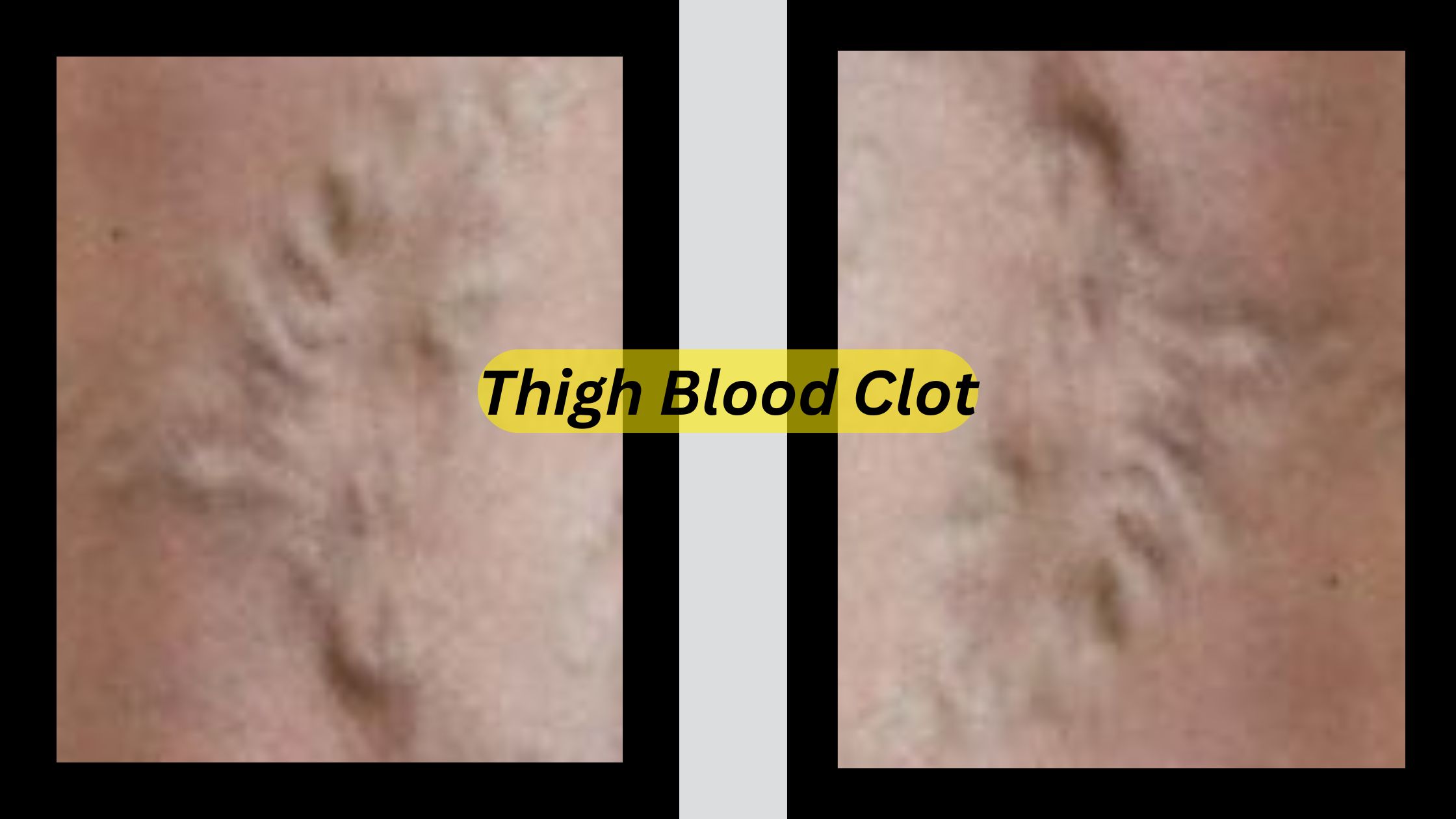If you’re experiencing pain in the inner part of the thigh, you might be wondering if this could be a sign of blood clots, also called Deep Vein Thrombosis (DVT).
This concern is particularly common in women who feel inflammation in the legs after delivery, who have been sedentary for a long time, or who have a history of becoming blood clots in a family.
In this article, we’ll explore:
- Whether inner thigh pain can indicate DVT
- How to recognize DVT symptoms (including does DVT pain come and go?)
- Whether DVT can go away on its own
- Risk factors and when to seek medical help
What Is Deep Vein Thrombosis (DVT)?
Deep vein thrombosis (DVT) occurs when a blood clot forms in a deep vein, usually in the legs or thighs. If left untreated, the clot can break loose and travel to the lungs, causing a pulmonary embolism (PE), which is life-threatening.
Pain in the inner part of the thigh can sometimes be a sign of blood clots, especially if it also has other symptoms such as inflammation, redness, heat or softness in the area. Blood clots, known as Deep Vein Thrombosis (DVT), are often in the legs and can lead to discomfort that may feel like dull pain or cramps. While pain in the inner part of the thigh can be for various reasons such as muscle stretch, nerve compression or greater use, it’s important to consider the likelihood of blood clots if the pain is constantly and unopposed.
Risk factors for DVT include prolonged immobility, recent surgeries, pregnancy or a family history of clotting disorders. If you experience drowsiness or pain as well as changes in inflammation or color, it is important to seek medical help immediately, as untreated blood clots can lead to serious complications such as pulmonary embolism.
Common Symptoms of DVT
- Swelling in one leg (often sudden)
- Pain or tenderness in the calf or thigh, it may feel like a cramp or soreness
- Warmth and redness over the affected area
- Skin discoloration, shows like bluish or reddish color
Unlike muscle pain, DVT pain remains often but its intensity can fluctuate. It usually increases by walking or standing and can’t completely fix rest.
Can Inner Thigh Pain Be a Blood Clot?
Yes, inner thigh pain can sometimes signal a blood clot, especially if accompanied by:
- Swelling in one leg (more than the other)
- Leg heaviness or tightness
- Visible veins or discoloration
However, inner thigh pain can also result from:
- Muscle strain (from exercise or overuse)
- Nerve compression (such as meralgia paresthetica)
Hip or groin injuries
When to worry? If the pain is persistent, one-sided, and combined with swelling, seek medical evaluation.
Swelling in Legs After Giving Birth: Is It DVT?
Pregnancy and childbirth increase the risk of DVT due to:
- Hormonal changes (increased clotting factors)
- Reduced mobility during recovery
- Pressure on pelvic veins from the baby
Postpartum swelling is common, but if you notice:
- One leg significantly larger than the other
- Sudden pain or warmth in the calf/thigh
- Difficulty walking due to leg heaviness
Does DVT Pain Come and Go?
DVT discomfort may:
- Worsen with activity (walking, standing)
- Ease slightly with elevation but not disappear
- Feel like a constant dull ache or cramp
Unlike muscle pain, DVT-related pain doesn’t fully resolve with rest or massage. If your pain comes and goes but keeps returning, consult a doctor.
Can DVT Go Away on Its Own?
Small clots may dissolve naturally, but most DVTs require medical treatment to prevent:
- Clot enlargement (leading to worse blockage)
- Pulmonary embolism (PE) (life-threatening if the clot travels to the lungs)
Treatment Options for DVT
- Blood thinners (anticoagulants) – Prevent clot growth
- Compression stockings – Reduce swelling and improve circulation
- Thrombolytics (for severe cases) – Clot-dissolving medications
- IVC filter (if blood thinners aren’t an option) – Prevents clots from reaching the lungs
Ignoring DVT is dangerous—early treatment significantly lowers risks.
When to See a Doctor
Seek immediate medical attention if you experience:
- Sudden, severe leg swelling
- Chest pain or shortness of breath (possible pulmonary embolism)
- Persistent leg pain with no clear cause
High-risk groups include:
- Recent surgery or trauma
- Prolonged bed rest or long flights
- Family history of blood clots
- Obesity or smoking
Key takeaways:
- DVT is serious but treatable—don’t wait to seek help.
- Swelling in legs after giving birth should be monitored closely.
- DVT does not typically resolve on its own—medical intervention is often needed.
If you suspect a blood clot, contact a healthcare provider immediately. Early detection saves lives.
Final Thoughts
Pain in the inner part of the thigh can sometimes be a sign of blood clots, especially if with inflammation, heat or discoloration. While DVT pain can fluctuate, it doesn’t completely disappear without treatment. By understanding the signs and working quickly, you can reduce the risk of DVT complications. If there is any doubt in your mind, always consult a doctor – your health is worth it.
